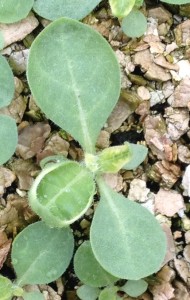It is expected that the remaining tobacco in fields will be harvested this month. Some growers are still on their second pass, while many have started their third pass and some even the final pass. Cured quality continues to be good for what has been harvested so far. There are no widespread problems to report. Also, there have been no reports of Blue Mold on tobacco in Ontario this year.
Curing appears to be going fairly well for most growers. There have been some complaints about difficulty in removing green from the veins of leaves. In some cases, the cause can be related to the maturity of the crop being delayed because of less than favourable growing conditions that were experienced at times earlier in the growing season. Also, applying nitrogen later in the season to compensate for leaching losses could be another contributing factor combined with the hot and dry weather as of late. Several growers have been irrigating, which should help.
We have encountered a few cases where leaf drop is occurring in the mid-stalk leaves. This is being attributed to an excessively deep burn in the leaf axil caused by the contact sucker control. A deep burn likely happened with the first application of sucker control when conditions were quite hot and the tobacco was smaller, particularly in the slower growing areas of fields. Further applications of sucker control have likely contributed to the deepness of the burn in the leaf axil (see picture below). Higher nitrogen rates on tobacco with a deep burn in the leaf axil will add further weight to the leaves that can further enhance leaf drop, particularly under windy conditions.
Post prepared and sent by Canadian Tobacco Research Foundation
Mailing Address: CTRF, P.O. Box 322, Tillsonburg, ON N4G 4H5
Telephone: 519-842-8997
Web Address: http://ctrf1.com








